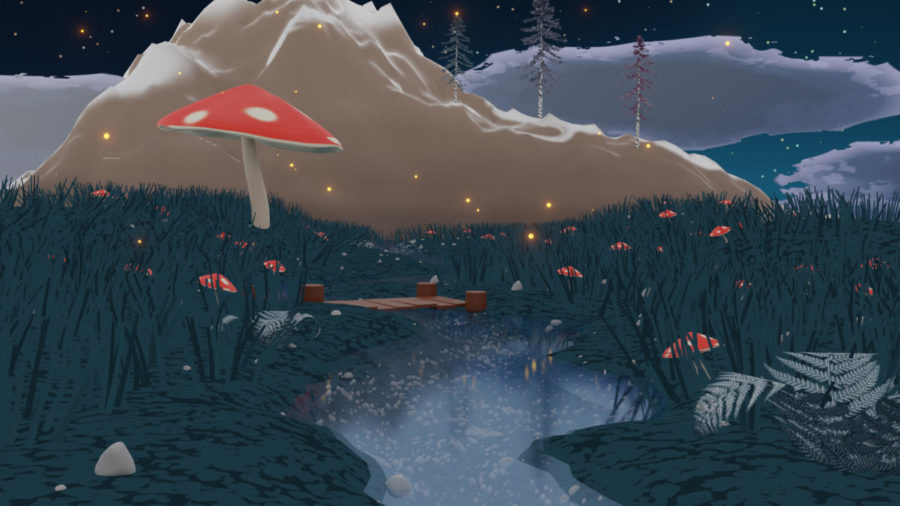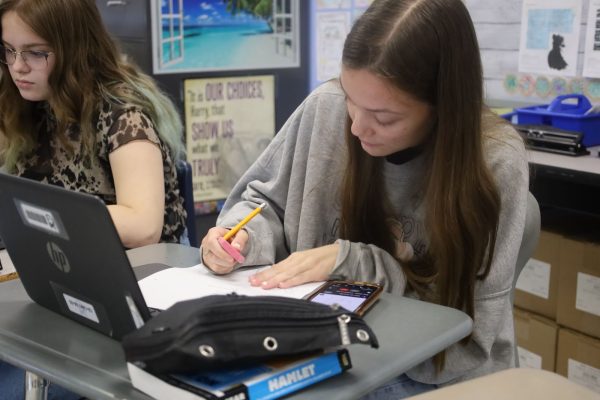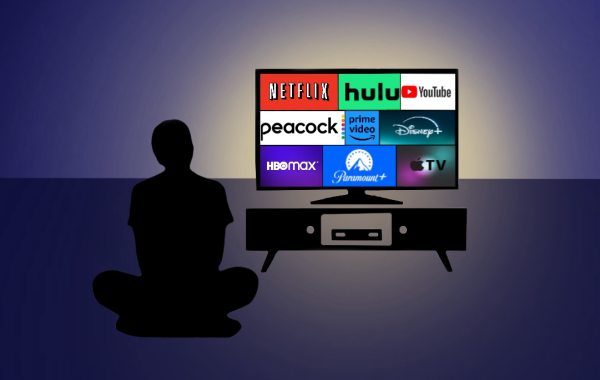Brushstrokes and cursor swipes
photo by Emma Lundquist
Senior Emma Lundquist’s artwork made in Modeling and Simulation. Complex geometry and visual effects create a unique atmosphere in the scene.
Group projects, posters and visual assignments make students groan with exasperation. The ability to create and design something original seems impossibly complex. However, students like senior Emma Lundquist believe art does not have to be as complicated as it is made out to be. Digital art expands into a broad list of topics and potentials.
“I actually started freshman year in the modeling and simulation program, it’s an important field that’s connected with mod and sim, and I really wanted to improve my art skills,” Lundquist said.
Teachers take notice of the effort students put into their work. Genuine skills are only a bonus to an assignment. Emma shines in her assignments and projects, doing her best in each.
“Emma puts in a lot of effort with her artwork and always tries to make it look as good as possible and it shows,” Steven Martinez said, the teacher for Modeling and Simulation. “The amount of time she takes outside of class to work on her assignments shows that it’s not just about getting the work done, but also about showing pride in her work. She has a passion for this.”
Emma has taken classes such as Digital Art and Mod & Sim that use professional applications like Adobe products, an industry standard. Several programs allow students to have access to a wide range of tools for free under an educational license. However, advanced software is not necessary for digital painting.
“I use Photoshop in Digital Art, but because I have an iPad, it’s a lot easier to use Procreate with an Apple pen,” Lundquist said.
To start any digital art project, artists look for inspiration and reference for their piece. For Lundquist, her inspiration comes from people, drawing ideas from conversations and special moments.
“I find inspiration in my friend group. I see what they do and our actions, and I draw based on that,” Lundquist said.
After starting with a reference, basic shapes can be formed to visualize how figures will sit inside the piece. Organic shapes can be broken down into simple geometry. A hand, for instance, can be formed with a square palm, a triangle on the side for a thumb, and the fingers can be simplified down to thin rectangles. It doesn’t have to be complex- keep it simple and basic.
“Everything is going to be easier if you block out the rough shapes in the image first,” Lundquist said.“I begin to detail and then color if necessary. I don’t always color because some pieces are pretty with just the line work. After that, I check everything and clean up the edges, making sure all of my shapes are balanced with each other.”
It’s not uncommon for artists to lose interest and burn out from their projects. The visual composition might be off, the proportions might look uncanny, or even that the art didn’t turn out the way it was originally envisioned. However, Lundquist understands artists are their own harshest critic, working against themselves all the time during their work.
“I am a perfectionist. If I see something that I don’t like, I delete it, and with time based projects, you can’t do that,” Lundquist said. “It doesn’t have to be perfect. I mean, everything’s gonna have a mistake. Just because you aren’t good at something doesn’t mean you shouldn’t try. Especially with art. You’re not going to be good at it straight away. If you don’t like it, try again.”
Your donation will support the student journalists of Hagerty High School. We are an ad-free publication, and your contribution helps us publish six issues of the BluePrint and cover our annual website hosting costs. Thank you so much!







